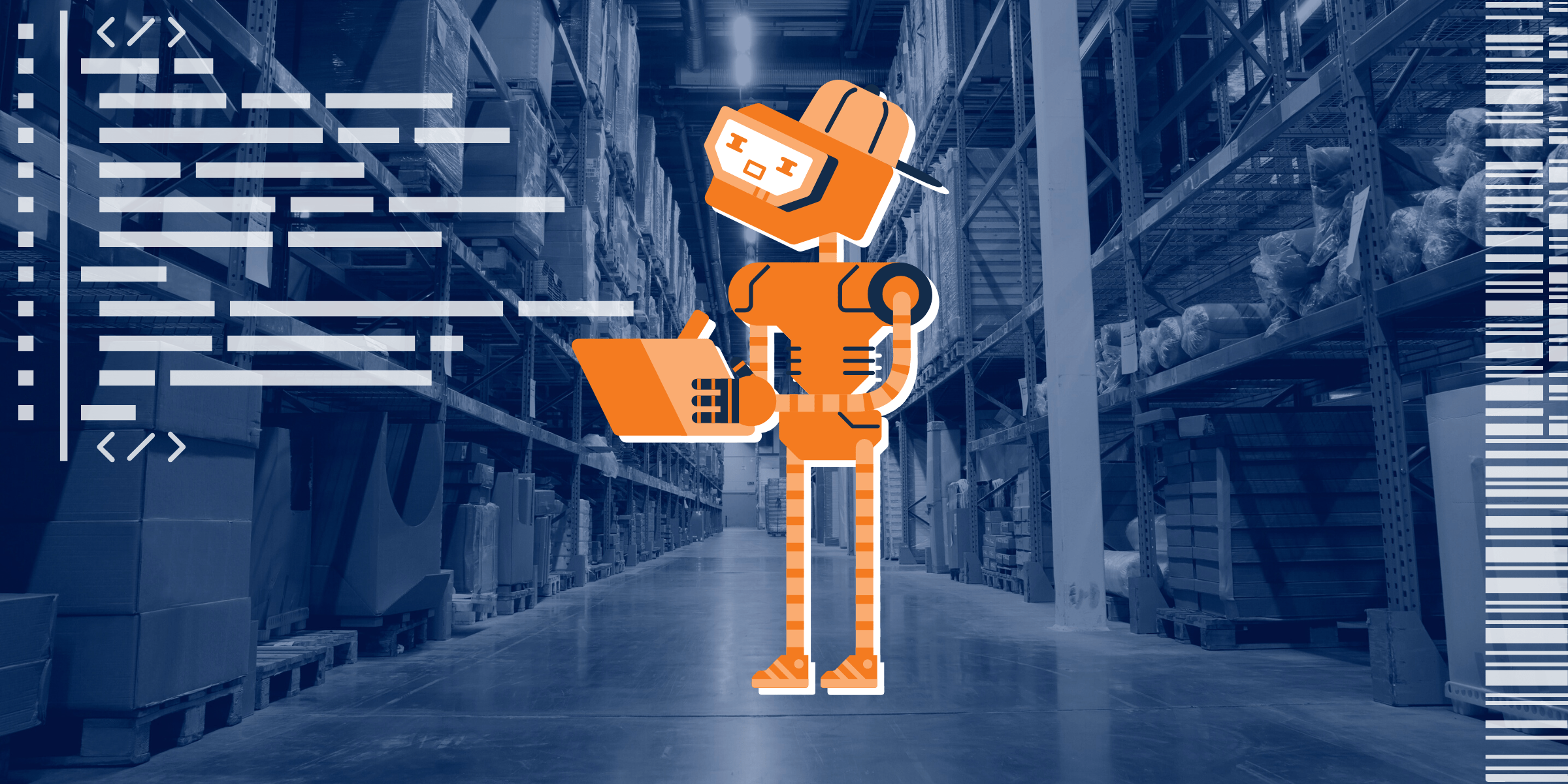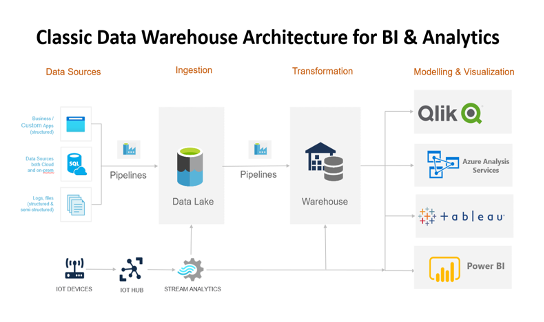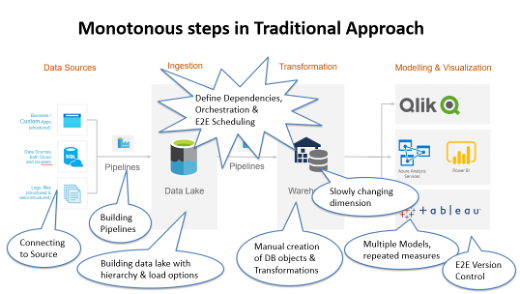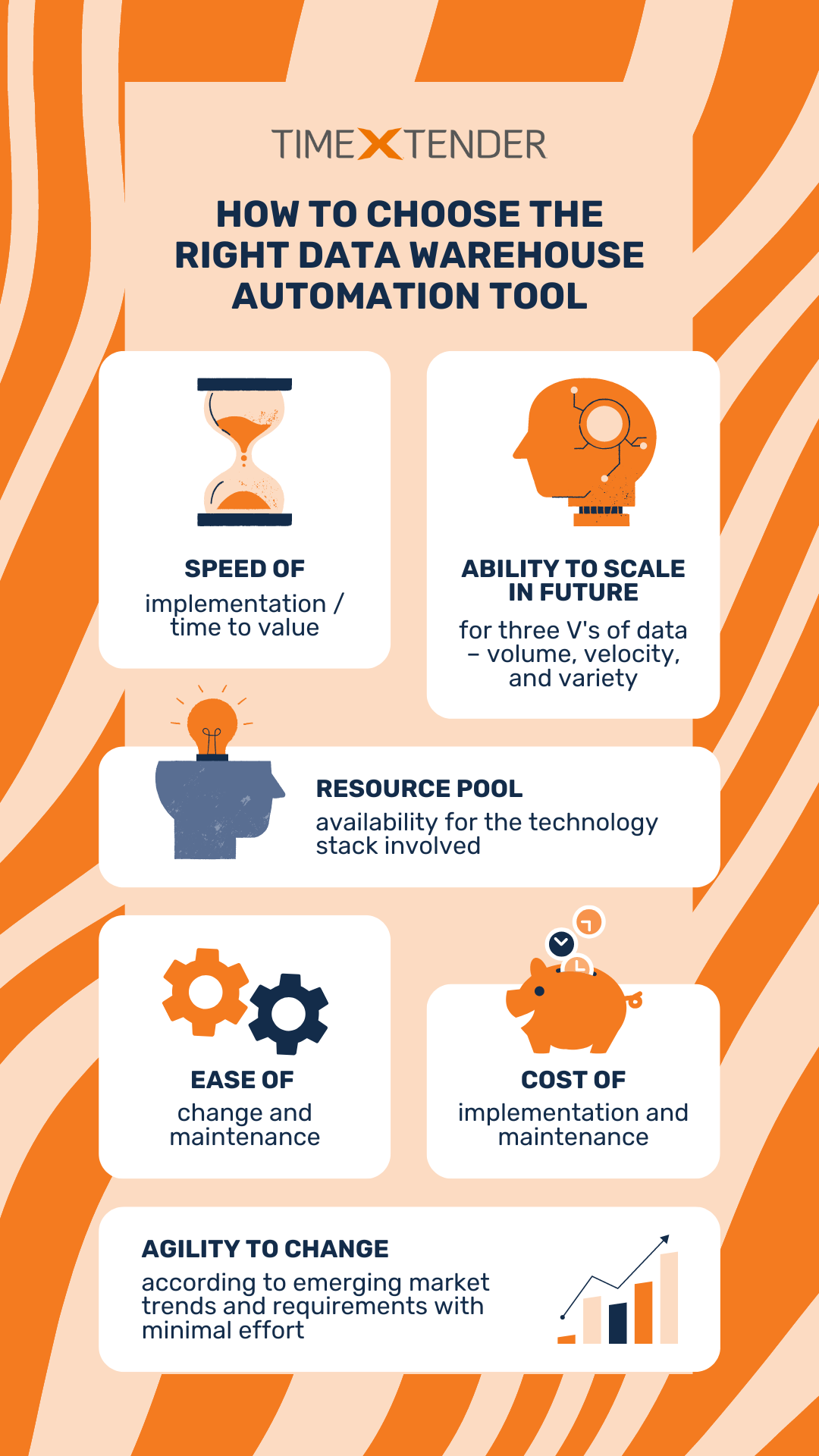6 min read
Data Warehouse Automation: Why, What, & How To Choose Your DWA Tool
Written by: Harish Kundanchery Mechery, Solution Specialist - May 5, 2023

Data warehouse (DW) automation tools can simplify and speed up the process of designing, building, and managing a data warehouse. However, with so many options available, it can be challenging to choose the right DW tool for your needs. In this post, we’ll discuss the why, what, and how of a data warehouse and the key aspects to consider when selecting a data warehouse automation tool. By the end of this post, we will have explored the factors to weigh and best practices for evaluating and selecting the right tool for your business needs.
THE WHY
Why do I need a data warehouse in the first place?
It’s critical for organizations to have reporting and analytical capabilities based on data to thrive and prosper. A data warehouse provides these capabilities and enables business leaders to make effective decisions backed by data.
Key Benefits:
- Improving efficiency and productivity: By analyzing data, business leaders can identify areas where their operations can be made more efficient and productive.
- Driving better financial performance: By using data analytics to identify areas where costs can be reduced or revenues increased, business leaders can improve their organization’s financial performance.
- Identifying inefficient internal processes: Business leaders can use data analytics to identify inefficient internal processes and develop new, streamlined workflows that enhance operational efficiency.
- Robust framework: For BI & analytics technical teams, a centralized place to access data from all departments and build reports and predictive models on top of it.
THE WHAT
What platform and architecture should I adopt for my DW?
There are multiple architectures and methodologies in the market that can be used for creating your DW. The most widely used approach is the three-tier architecture due to the key advantages such as data integrity, scalability, quality, and consistency.
Sample classic three-tier DW Architecture diagram:

Of course, it comes with its own disadvantages, mostly in dealing with unstructured and streaming data. But those can be overcome by having a data lake to store the raw data and build the DW on top of it. Other streaming engines can be directly connected to the data lake for raw data processing.
If classic architecture doesn’t tickle your fancy, there are other architectures, such as:
- Data lakehouse: A data lake architecture for data warehouse combines the flexibility, cost-efficiency, and scale of data lakes with the data management and ACID transactions of data warehouses, enabling business intelligence (BI) and machine learning (ML) on all data. Some disadvantages of using a data lake architecture include complexity, data quality issues, and security risks.
- Data mesh: A data mesh is a decentralized data architecture and governance concept that organizes data by business domains, such as marketing, sales, or finance. It shifts the responsibility for data from a central data team to the domain teams that produce and own the data. disadvantages of using a data mesh architecture include the difficulty of implementation in organizations with a strong centralized culture1, and the need for more devices than an end-to-end solution, making the network larger, more complex, and more expensive to implement.
- Data marts: A data mart is a subset of a larger data warehouse designed to serve a specific business function or department within an organization. It contains a subset of the organization's data that is relevant to a particular group of users and is optimized for querying and analysis by that group. Data marts are often used to provide more focused and timely access to data than is possible through the larger data warehouse and can be built more quickly and with less complexity than a full-scale data warehouse. However, they may not provide the complete functionality an organization needs for an overall data architecture.
It’s good to keep in mind that every architecture comes with its own pros and cons. It's strictly based on your organization's data requirement needs and budget to determine which architectural decision is made.
These architecture options can be implemented using any modern cloud platforms, such as:
- Azure
- Amazon Web Services (AWS)
- Snowflake
- On-premises setup
The technology platform can be selected based on factors such as:
- IT policies in the organization
- Cost considerations
THE HOW
Now that you have identified the need and finalized the architecture of DW, we’ll explore implementation options. When considering how you want to build a DW, evaluate your options on the following aspects:
- Speed of implementation/time to value
- Ability to scale in future for three V's of data – volume, velocity, and variety
- Ease of change and maintenance
- Cost of implementation and maintenance
- Agility: option to change technology stack according to emerging market trends and requirements with minimal effort
- Resource pool availability for the technology stack involved
What are my options?
1. Traditional Approach
Most of the data warehouses currently in existence were built the traditional way, by hand coding each component. This is a build everything from scratch, by-hand approach.
This approach can still be relevant for organizations with fully customized and complex requirements. However, for most requirements, there are more advanced, simple, and easy-to-build and maintain approaches in the market now.
Points to ponder on:
There are several components of DW concepts which can be a painstaking effort to build the traditional way. Some of them are highlighted in the image below.
![]()

As we already know, ease of change and maintenance is critical for the effectiveness of DW in the long run. Traditional approach also poses challenges in this aspect.
Some of the key support and maintenance activities that can be tedious and expensive in traditional approach are:
- Adding new data sources
- Change in data source structure.
- Upgrading to latest storage technologies
- Periodic storage cleanup and maintenance
- Database object changes without impacting downstream
- Creating & maintaining an updated project documentation
- Maintaining Data dictionary and Data Lineage
- Managing Multi-Environment (Dev, QA, PROD) deployment
2. Use Data Warehouse Automation Tools
Multiple tools are currently available in the market that can help you design, build, and manage your data warehouse without the need for manual coding or scripting. This can simplify and speed up your analytics workflows while reducing the risk of errors and inconsistencies.
Data warehouse automation tools often automate various repetitive tasks and DW components such as data modeling and integration, transformation (ETL), quality assurance, metadata management, documentation, testing, and deployment that can help streamline the entire data warehouse lifecycle.
Asking the right questions will automatically lead to the right direction of any decision making. Before zeroing in on any of the DW automation tools, use the following questions as a tool to extract the right information from your potential vendors.
Key Questions:
- How agile is the solution? Is business logic abstracted from the underlying storage?
- Is the business logic locked to one storage (eg: Azure SQL server)? or can we seamlessly change underlying technologies (eg: Snowflake, Synapse, RDS) in future with the same business logic?
- Can we scale the increasing data needs of the organization?
- Can you re-use the data model on various visualization tools such as PowerBI, Qlik and Tableau without building it again?
- Has the power of metadata been leveraged in the tool for intelligent scheduling and automating talks?
- Is the tool capable of identifying dependencies of objects and creating the schedule jobs based on them?
- Can the tool intelligently change the order of job execution, based on execution time of jobs to have minimal total runtime?
- What is the automation tool optimized for?
- Every automation tool is optimized focused on one or two aspects, such as data integration, connectivity, speed, security, and transformations. Is the tool optimized for what’s important for you?
GET OUr quick-and-easy Key Questions Guide
Other Questions:
- How transparent is the pricing?
- Pricing can be based on different aspects such as number of users, amount of data, and features used, as well as consumption based or instances based.
- Which consumption models can be suitable for you now and considering future growth in the three V’s of Data?
- How wide & broad is the scope of automation?
- Does it include multiple source connectivity?
- Does it include creating data pipelines and data objects creation?
- Does it include data cleanup, preparation and transformations?
- Does it include data modelling and defining relationships between objects
- How deep and seamless Is the integration of different layers of DW?
- Are the different pieces of DW really integrated, or is it just stitched together on the surface?
- How broad and deep can documentation and lineage be generated across components out of the box?
- What administrative and monitoring features come out of the box with the integrated solution?
- How is security managed?
- Is the scheduling of execution automated and self-adjusting?
- What monitoring options are available?
- What types of alerts and in what conditions can these be triggered?
- How engaged is the support and community?
- Does the vendor have an active community and support where your every query is answered within the stipulated time?
- Does the vendor offer affordable training and certifications on their tools?
Once you evaluate the various DW automation tools on the above aspects and corroborate with your requirements, you’ll be able to find the tool that is the right fit for you based on what you have discovered.

In the end, it will be up to you to choose which tool is the best fit for your business needs. I will leave you with a list of DW automation tools from a few software comparison websites:
- Best Data Warehouse Automation Software in 2023 | G2
- Best Data Warehouse Software list: Reviews & Ratings | Revain
I hope these questions and suggestions provoke your thoughts on the evaluation process and empower you to select the right data warehouse automation tool that suits your requirements. Good luck!
ABOUT TIMEXTENDER
TimeXtender is the holistic solution for data integration.
TimeXtender provides all the features you need to build a future-proof data infrastructure capable of ingesting, transforming, modeling, and delivering clean, reliable data in the fastest, most efficient way possible - all within a single, low-code user interface.
You can't optimize for everything all at once. That's why we take a holistic approach to data integration that optimizes for agility, not fragmentation. By using metadata to unify each layer of the data stack and automate manual processes, TimeXtender empowers you to build data solutions 10x faster, while reducing your costs by 70%-80%.
We do this for one simple reason: Because Time Matters.
